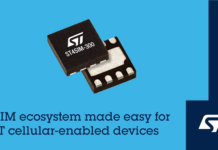Machines have gradually become as intelligent as human beings. This can be vouched by the fact that it is possible in current times to know how your cargo is moving towards its destination or whether the ATM machine requires a refill, or an RO system at home requires servicing or at what pace we are consuming different types of energies on earth every day.
In the recent past, we have witnessed that digital space has undergone major transformation and there will be a continuous evolution in the field. Internet of Things (IoT) is perhaps the latest entrant in the digital space. Machine-to-machine (M2M) technology has made it possible for wired and wireless systems to interact without requiring any manual involvement.
Internet of Things (IoT) is a seamless connected network of embedded objects/devices, with identifiers, in which M2M communication without any human intervention is possible using standard and interoperable communication protocols.
With the advent of the IoT, the number of connected sensors soon will reach trillions, working with billions of intelligent systems involving innumerous applications will drive new consumer and business behaviour. The Indian government is majorly focusing in this emerging area under its digital India programme. One of the top most initiatives, the Digital India programme, which aims at ‘transforming India into digital empowered society and knowledge economy’, is to provide the required impetus for development of the IoT industry ecosystem in the country.
Among other things, IoT can help automate solutions to problems faced by various industries like agriculture, health services, energy, security and disaster management, among others, through remotely connected devices. IoT offers avenues for telecom operators and system integrators to significantly boost their revenues and this has resulted in their taking lead in adoption of IoT applications and services being offered by the technology. Apart from direct IoT applications, the IT industry also has an opportunity to provide services, analytics and applications related to IoT.
Internet of Things involves three distinct stages:
The sensors which collect data (including identification and addressing the sensor/device).
Application which collects and analyzes this data for further consolidation.
Decision making and the transmission of data to the decision-making server.
Analytical engines and Big Data may be used for the decision making process. Several countries like the US, South Korea, and China, among others, have taken lead in their preparedness for taking advantage for IoT.
As per estimates, the Indian IoT industry is expected be worth $15 billion, and to connect 28 billion devices to the Internet by 2020. Wireless networks in India are currently making leaps and bounds in their development. As a result, a debate on machine to machine communication is gathering pace. Today, when connectivity is stronger than ever and we incorporate computers into our everyday lives, the IoT ecosystem comes into the dialogue.
Each gateway can be equipped with communication sensors enabled with a selection of networking options including Wi-Fi, ZigBee, 3G and Bluetooth. Many of the gateways come with Intelligent Platform Management Interface (IPMI), which makes remote management and maintenance of devices easier.
Having identified the potential of IoT, the Government of India is also focusing on the area. As part of the Digital India programme launch, Prime Minister Narendra Modi recently announced the launch of the Centre of Excellence (CoE) for IoT in Bengaluru, for enabling rapid adoption of IoT technology and fostering a new growth strategy.
With seed fund from the government, a joint venture by National Association of Software and Services Companies (Nasscom), Department of Electronics and Information Technology (DEITY) and Education and Research Network (ERNET), the CoE will be run on a Public Private Partnership (PPP) model.
The government plans to harness the potential of IoT for addressing issues like transport system, parking, electricity, waste management, water management and women’s safety to create smart cities. It has also realised that IoT can help automate solutions to problems faced by various industries, like agriculture, health services, energy, security and disaster management, among others, through remotely connected devices.
According to the government’s Draft Policy on Internet of Things 2015, the number of Internet-connected devices (12.5 billion) surpassed the number of human beings (seven billion) on the planet in 2011, and by 2020, internet-connected devices are expected to number between 26 billion and 50 billion, globally. Therefore to leverage India’s strength as a leader in the global service industry, through suitable promotion and supportive mechanisms, the draft IoT policy has been formulated to create IoT ecosystem in the country.
After learning from a report by Machine Research, a provider of strategic market intelligence on the Internet of Things, that by 2025, IoT will generate over two zetta bytes of data, mostly generated by consumer electronics devices, the government’s moves become laudable. This is now the time to see how IoT will drive new intelligent industry and how the consumer behaviour takes shape. It is apparent that there will soon be high demand for intelligent industry solutions and several companies in the future are set to take full advantage of the IoT.
Source: http://www.deccanherald.com/


















